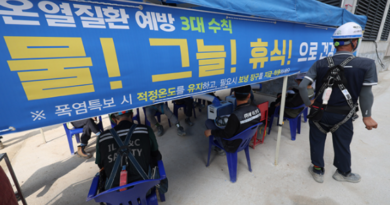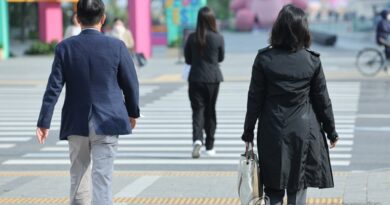(LEAD) 7 dead, 6 missing in heaviest rainfall in 80 years
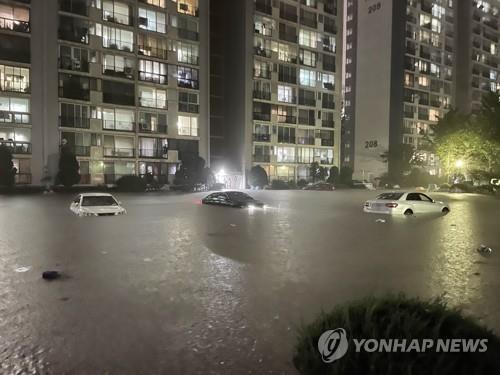
(ATTN: UPDATES with details, photos from 4th para)
SEOUL, Aug. 9 (Yonhap) — The heaviest rainfall in 80 years has pounded Seoul and surrounding regions, leaving seven people dead and six others missing, as well as flooding homes, vehicles, buildings and subway stations, officials said Tuesday.
Parts of Seoul, the western port city of Incheon and Gyeonggi Province that surrounds Seoul received heavy rains of over 100 millimeters per hour Monday night, with per-hour precipitation in Seoul’s Dongjak district surpassing 141.5 mm at one point, the highest downpour per hour since 1942.
The downpours left five people dead and four others missing in Seoul, while in Gyeonggi Province, two had died and two others had gone missing as of 6 a.m., according to the government.
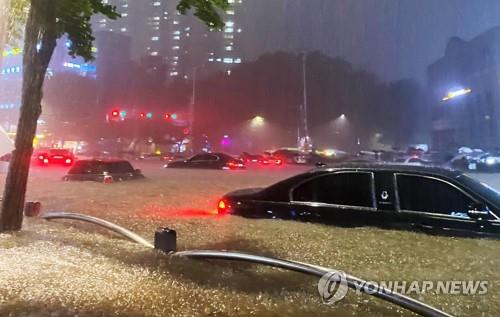
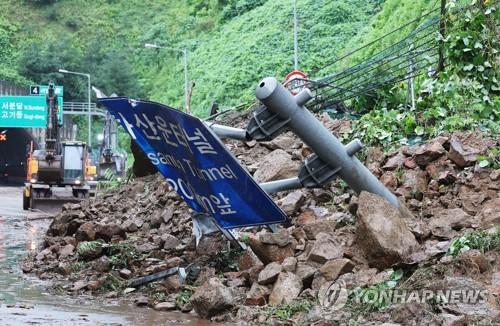
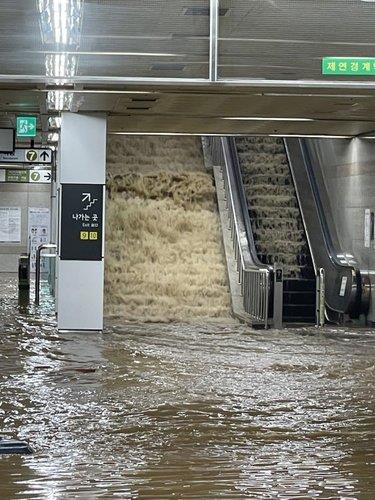
Nine people sustained injuries in Gyeonggi Province and 163 people from 107 households in the capital area were left homeless and took shelter in schools and other public facilities.
In Seoul’s Gwanak district, three people — two 46-year-olds and one 13-year-old child — reported they were trapped in the semi-basement level of a building at 9:07 p.m. Monday but died later.
In Dongjak, a ward office employee in his 60s died of what was believed to be electric shocks at 6:50 p.m. during clean-up work after a roadside tree fell down due to the rain.
An additional person was killed at 5:40 p.m. in a submerged home in the district.
In the city of Gwangju, Gyeonggi Province, one person was found dead trapped under the debris after a bus station collapsed, while one other died in the province after a landslip left him buried in earth.
In Seoul’s Seocho district, four people went missing, some in a corridor of an underground shopping area and others down a manhole, while two others in Gyeonggi’s Gwangju remained unaccounted for after being swept away in a flooded stream.
The downpours also left many public facilities out of service, with eight cases of flooded railroads reported in Seoul, Incheon and elsewhere, and causing temporary suspension of services in sections of some railway and subway lines, including Seoul Subway Line 4 and the Gyeongin Line.
About 80 sections of the country’s roads, three underground roadways and 26 riverside parking lots were blocked for safety concerns.
Entry into 134 hiking courses at four national mountain parks, including Mount Bukhan in the northern periphery of Seoul, remain barred. Nineteen passenger ferry routes also remained out of service as of Tuesday.
Fire authorities also rescued 88 people from flooded streams in Gyeonggi and other areas, the government also said.
The interior ministry upgraded its flood damage watch level from “alert” to “serious” at 1 a.m. Tuesday.
As of 6 a.m., the country’s central and other regions were receiving rains of up to 50 mm per hour, with the accumulated precipitation in Dongjak reaching 417 mm from Monday through 4 a.m. Tuesday.







